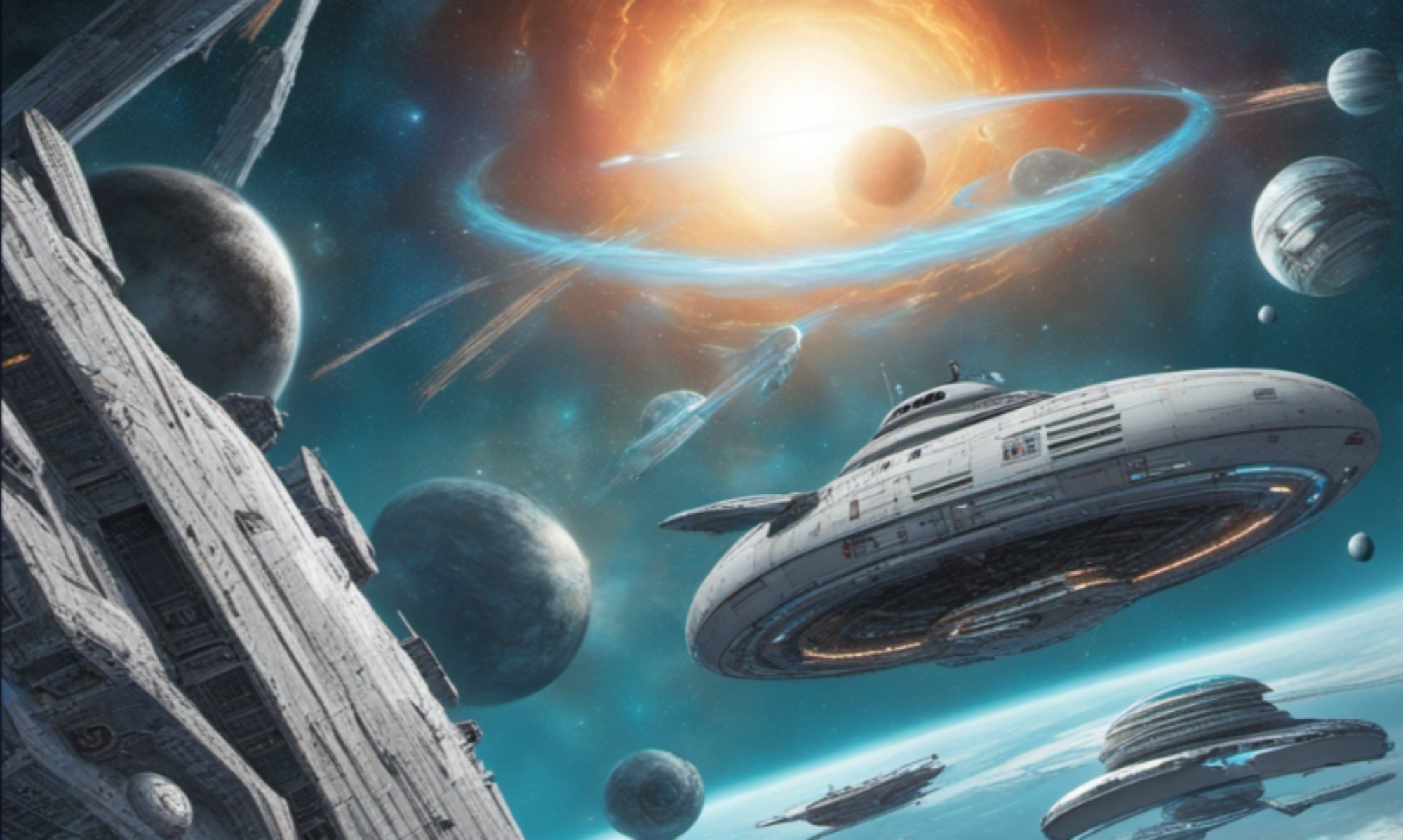Escape Velocity: Chapter 3 – A brief history of the Orion Arm
Dan WildPrevious chapter Dimble climbed to the podium amid the loud applause of two people over-clapping. “Thank you, thank you…thank you.” Dimble was both nervous and excited. “Today I’ll cover early settlement to the present day, exploring both its positive aspects, while also looking at things we could do better, and things we should not do …
Continue reading “Escape Velocity: Chapter 3 – A brief history of the Orion Arm”
Tycho’s Crater (Or the True Story of the First Moon Landing)
Dan WildA science fiction story for children. Recommended age: 8-80. Ever since he could crawl and look at the stars, Tycho had loved astronomy. He lived on a farm called Twinkling Creek, and when the night was clear, the sky was dotted with a thousand crystals. On his 5th birthday, Tycho got a star map. He …
Continue reading “Tycho’s Crater (Or the True Story of the First Moon Landing)”
Escape Velocity: Chapter 2 – From the heart
Dan WildTales from the Orion Arm: Book 3 Previous chapter Two moths entered the lecture theatre and danced near the stage lights. Dimble would now have an audience of eight, if he counted the hawk moths. A Tentacled Shrew strode anxiously into the hall, but only because she had forgotten one of her eight gloves. Two …
Continue reading “Escape Velocity: Chapter 2 – From the heart”
Tau Ceti: The closest single sun-like star
Dan WildIt was Frank Drake (1930-2022) who brought Tau Ceti to the attention of science-fiction. In 1960, the National Radio Astronomy Observatory in Greenbank, West Virginia, granted him access to the Tatel radio telescope. What started out as Project Ozma later became SETI, the search for extraterrestrial intelligence. Drake’s first major contribution to SETI was to …
Continue reading “Tau Ceti: The closest single sun-like star”
A short history of Enceladus – Saturn’s waterspout moon
Dan WildWatching a cryovolcano erupt on Enceladus would be one of the sights of the solar system. These geysers shoot water vapour more than 4km into the air. Well, it’s not really ‘air’, as Enceladus doesn’t have much of an atmosphere. But so much water is ejected in these plumes that they have contributed to one …
Continue reading “A short history of Enceladus – Saturn’s waterspout moon”
Escape Velocity: Chapter 1 – Moonlake
Dan WildTales from the Orion Arm: Book 3 They filed out of the hall, bustling with excitement. A bearded young man in hipster jeans, brows furrowed, chatted to a young Sirian woman, who gave him her full attention. Everyone gives Zeen Crawdex their full attention. Crawdex looked around as if someone had called his name, or …
Continue reading “Escape Velocity: Chapter 1 – Moonlake”
Alpha Centauri: Two bright princesses and a red dwarf
Dan WildI remember as a teenager, blinking though binoculars, excited that I could just make out Alpha Centauri as a double star. Then I borrowed a low-end refractor telescope and could more easily make out the binary nature of the pair. It was the Jesuit, Father Jean Richaud (1633-1693), who first determined the binary using his …
Continue reading “Alpha Centauri: Two bright princesses and a red dwarf”
Epsilon Eridani: Already in the sights of asteroid miners
Dan WildAlthough known to early star gazers, Epsilon Eridani does not figure heavily in myth. Claudius Ptolemy was the first astronomer to pay this star any sustained attention, cataloguing it in his famous 2nd-century Almagest. Indeed, it was Ptolemy that named the constellation Eridanus, after the ancient Greek word for ‘river’ (Ποταμού). Epsilon Eridani famously entered …
Continue reading “Epsilon Eridani: Already in the sights of asteroid miners”
The Human Factor: Greene’s existential world of espionage
Dan Wild“A crumb could contain a microdot.” (129) The first Graham Greene book I read, Our Man in Havana (1958), followed the adventures of a vacuum cleaner salesman after being recruited by British Intelligence (and his increasingly outlandish ways of meeting their expectations). The Human Factor is decidedly less light-hearted, but no less a solid read. …
Continue reading “The Human Factor: Greene’s existential world of espionage”
Teegarden’s Star: A nearby red dwarf with two rocky planets
Dan WildWhile Teegarden’s Star is rarely talked about at dinner parties, it’s only a matter of time. Why? Two words. Habitable planets. At only 0.09 solar masses, Teegarden is a very small star. With less than 1/10th the mass of the sun, Teegarden is lucky to be a star at all – any less mass and …
Continue reading “Teegarden’s Star: A nearby red dwarf with two rocky planets”
